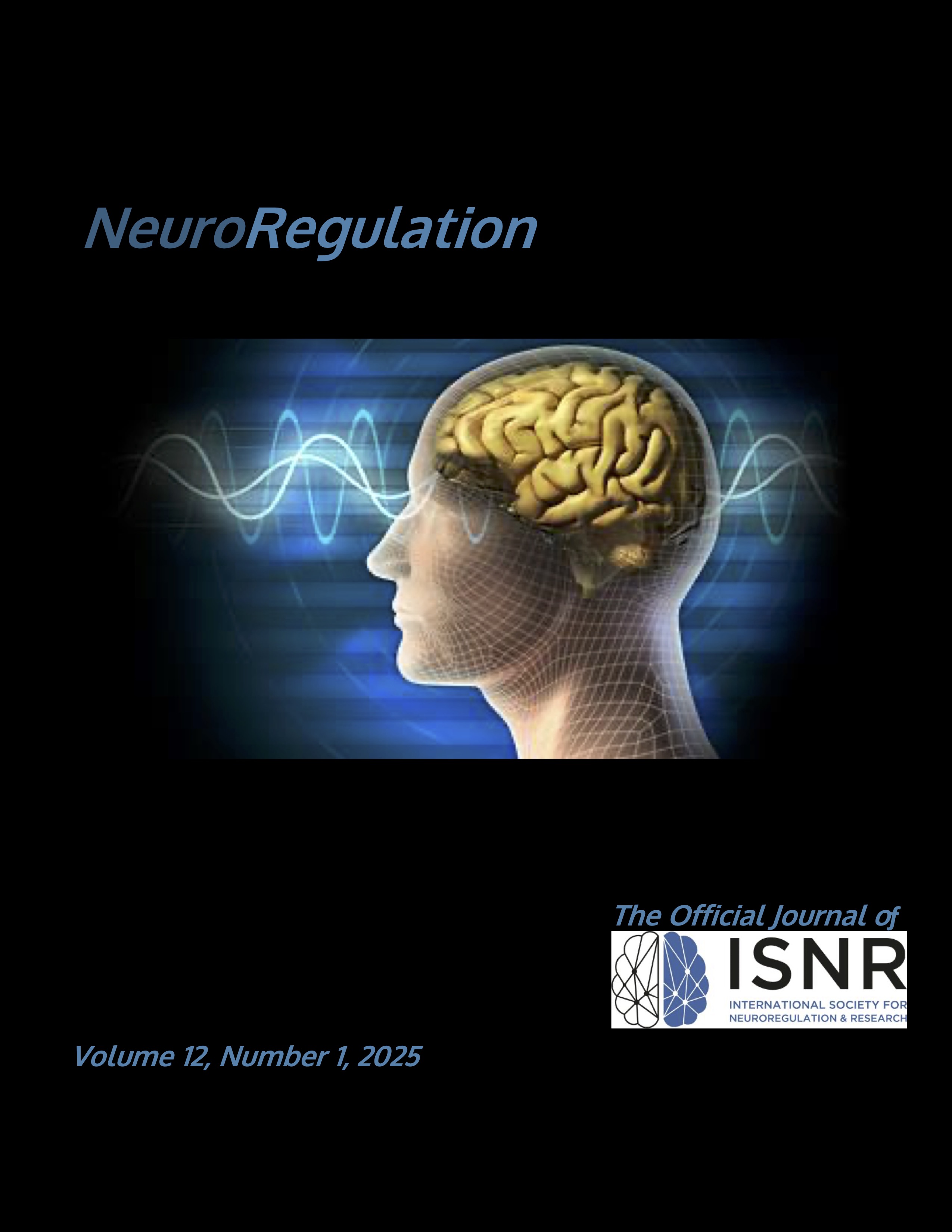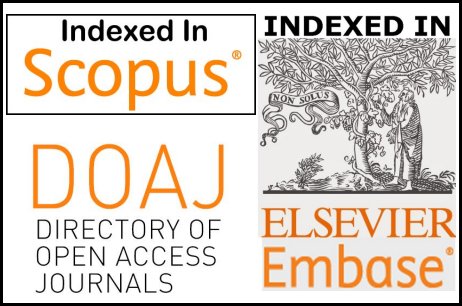Nonmusicians Experience Early Aging on Working Memory Tasks Compared to Musicians
DOI:
https://doi.org/10.15540/nr.12.1.2Keywords:
Music training, Age effect, Cognition, Working Memory, Backward Digit Span, Reading SpanAbstract
Background. Previous studies on musicians have revealed better working memory (WM) abilities in musicians than in nonmusicians. This study investigates whether the deterioration of WM with aging is slowed in musicians relative to nonmusicians by assessing their performances across an age continuum. Methods. A cross-sectional descriptive mixed design was used. The study involved 150 participants, 75 musicians, and 75 nonmusicians, with 15 musicians and 15 nonmusicians in each age group (10–19.11, 20–29.11, 30–39.11, 40–49.11, and 50–59.11). Simple and complex spans were measured to assess the participant's WM capacity. Backward Digit Span (BDS) maximum and Reading Span Percent Correct Score Weighted (RS PCSW) scores were calculated. Results. Two-way ANOVA revealed significant main effects of musicianship (p < .001) and age (p < .05) on BDS maximum and RS PCSW scores. A “moderate to large” effect size was noted (ηp2 = 0.062 to 0.455). Interaction effects were observed for BDS maximum (p = .022) and approached significance for RS PCSW (p = .06). Post-hoc analysis revealed that age effects were exclusively present in nonmusicians. Conclusion. Musical training can significantly reduce the cognitive decline associated with aging. It improves WM abilities, thereby minimizing the deleterious effects of aging.
References
Barrett, K. C., Ashley, R., Strait, D. L., & Kraus, N. (2013). Art and science: How musical training shapes the brain. Frontiers in Psychology, 4, Article 713. https://doi.org/10.3389/fpsyg.2013.00713
Bergman Nutley, S., Darki, F., & Klingberg, T. (2014). Music practice is associated with development of working memory during childhood and adolescence. Frontiers in Human Neuroscience, 7, Article 926. https://doi.org/10.3389/fnhum.2013.00926
Boebinger, D., Evans, S., Rosen, S., Lima, C. F., Manly, T., & Scott, S. K. (2015). Musicians and non-musicians are equally adept at perceiving masked speech. The Journal of the Acoustical Society of America, 137(1), 378–387. https://doi.org/10.1121/1.4904537
Bregman, A. S. (1990). Auditory scene analysis: The perceptual organization of sound. The MIT Press.
Chan, A. S., Ho, Y.-C., & Cheung, M.-C. (1998). Music training improves verbal memory. Nature, 396(6707), Article 128. https://doi.org/10.1038/24075
Cohen, J. (2013). Statistical power analysis for the behavioral sciences. Routledge. https://doi.org/10.4324/9780203771587
Conway, A. R. A., Kane, M. J., Bunting, M. F., Hambrick, D. Z., Wilhelm, O., & Engle, R. W. (2005). Working memory span tasks: A methodological review and user's guide. Psychonomic Bulletin & Review, 12(5), 769–786. https://doi.org/10.3758/bf03196772
Folstein, M. F., Folstein, S. E., & McHugh, P. R. (1975). "Mini-mental state": A practical method for grading the cognitive state of patients for the clinician. Journal of Psychiatric Research, 12(3), 189–198. https://doi.org/10.1016/0022-3956(75)90026-6
Franklin, M. S., Sledge Moore, K., Yip, C. Y., Jonides, J., Rattray, K., & Moher, J. (2008). The effects of musical training on verbal memory. Psychology of Music, 36(3), 353–365. https://doi.org/10.1177/0305735607086044
Gaab, N., & Schlaug, G. (2003). The effect of musicianship on pitch memory in performance matched groups. NeuroReport, 14(18), 2291–2295. https://doi.org/10.1097/00001756-200312190-00001
George, E. M., & Coch, D. (2011). Music training and working memory: An ERP study. Neuropsychologia, 49(5), 1083–1094. https://doi.org/10.1016/j.neuropsychologia.2011.02.001
Gignac, G. E. (2015). The magical numbers 7 and 4 are resistant to the Flynn effect: No evidence for increases in forward or backward recall across 85 years of data. Intelligence, 48, 85–95. https://doi.org/10.1016/j.intell.2014.11.001
Gignac, G. E., & Weiss, L. G. (2015). Digit Span is (mostly) related linearly to general intelligence: Every extra bit of span counts. Psychological Assessment, 27(4), 1312–1323. https://doi.org/10.1037/pas0000105
Guo, X., Ohsawa, C., Suzuki, A., & Sekiyama, K. (2018). Improved digit span in children after a 6-week intervention of playing a musical instrument: An exploratory randomized controlled trial. Frontiers in Psychology, 8, Article 2303. https://doi.org/10.3389/fpsyg.2017.02303
Grassi, M., & Soranzo, A. (2009). MLP: A MATLAB toolbox for rapid and reliable auditory threshold estimation. Behavior Research Methods, 41(1), 20–28. https://doi.org/10.3758/BRM.41.1.20
Hansen, M., Wallentin, M., & Vuust, P. (2013). Working memory and musical competence of musicians and non-musicians. Psychology of Music, 41(6), 779–793. https://doi.org/10.1177/0305735612452186
Helmbold, N., Rammsayer, T., & Altenmüller, E. (2005). Differences in primary mental abilities between musicians and nonmusicians. Journal of Individual Differences, 26(2), 74–85. https://doi.org/10.1027/1614-0001.26.2.74
Houtgast, T., & Festen, J. M. (2008). On the auditory and cognitive functions that may explain an individual's elevation of the speech reception threshold in noise. International Journal of Audiology, 47(6), 287–295. https://doi.org/10.1080/14992020802127109
Howarth, A., & Shone, G. R. (2006). Ageing and the auditory system. Postgraduate Medical Journal, 82(965), 166–171. https://doi.org/10.1136/pgmj.2005.039388
Kraus, N., & Chandrasekaran, B. (2010). Music training for the development of auditory skills. Nature Reviews Neuroscience, 11(8), 599–605. https://doi.org/10.1038/nrn2882
Krishnaswamy, A. (2004). Inflexions and microtonality in South Indian classical music. Frontiers of Research on Speech and Music.
Kumar, A. U., & Sandeep, M. (2013). Auditory cognitive training module. ARF funded departmental project submitted to All India Institute of Speech and Hearing, Mysore.
Lee, Y.-S., Lu, M.-J., & Ko, H.-P. (2007). Effects of skill training on working memory capacity. Learning and Instruction, 17(3), 336–344. https://doi.org/10.1016/j.learninstruc.2007.02.010
Maillard, E., Joyal, M., Murray, M. M., & Tremblay, P. (2023). Are musical activities associated with enhanced speech perception in noise in adults? A systematic review and meta-analysis. Current Research in Neurobiology, 4, Article 100083. https://doi.org/10.1016/j.crneur.2023.100083
Martin, M., Zöllig, J., & Jäncke, L. (2009). The plastic human brain. Restorative Neurology and Neuroscience, 27(5), 521–538. https://doi.org/10.3233/RNN-2009-0519
Matysiak, O., Kroemeke, A., & Brzezicka, A. (2019). Working memory capacity as a predictor of cognitive training efficacy in the elderly population. Frontiers in Aging Neuroscience, 11, Article 126. https://doi.org/10.3389/fnagi.2019.00126
Mishra, S. K., Panda, M. R., & Herbert, C. (2014). Enhanced auditory temporal gap detection in listeners with musical training. The Journal of the Acoustical Society of America, 136(2), EL173–EL178. https://doi.org/10.1121/1.4890207
Muñoz-Pradas, R., Díaz-Palacios, M., Rodriguez-Martínez, E. I., & Gómez, C. M. (2021). Order of maturation of the components of the working memory from childhood to emerging adulthood. Current Research in Behavioral Sciences, 2, Article 100062. https://doi.org/10.1016/j.crbeha.2021.100062
Münte, T. F., Altenmüller, E., & Jäncke, L. (2002). The musician's brain as a model of neuroplasticity. Nature Reviews Neuroscience, 3(6), 473–478. https://doi.org/10.1038/nrn843
Owen, A. M., McMillan, K. M., Laird, A. R., & Bullmore, E. (2005). N-back working memory paradigm: A meta-analysis of normative functional neuroimaging studies. Human Brain Mapping, 25(1), 46–59. https://doi.org/10.1002/hbm.20131
Pais, R., Ruano, L., P Carvalho, O., & Barros, H. (2020). Global cognitive impairment prevalence and incidence in community dwelling older adults—A systematic review. Geriatrics (Basel, Switzerland), 5(4), Article 84. https://doi.org/10.3390/geriatrics5040084
Reynolds, M. R., Niileksela, C. R., Gignac, G. E., & Sevillano, C. N. (2022). Working memory capacity development through childhood: A longitudinal analysis. Developmental Psychology, 58(7), 1254–1263. https://doi.org/10.1037/dev0001360
Richardson, J. T. E. (2011). Eta squared and partial eta squared as measures of effect size in educational research. Educational Research Review, 6(2), 135–147. https://doi.org/10.1016/j.edurev.2010.12.001
Román-Caballero, R., Arnedo, M., Triviño, M., & Lupiáñez, J. (2018). Musical practice as an enhancer of cognitive function in healthy aging - A systematic review and meta-analysis PLoS ONE, 13(11), Article e0207957. https://doi.org/10.1371/journal.pone.0207957
Saarikivi, K. A., Huotilainen, M., Tervaniemi, M., & Putkinen, V. (2019). Selectively enhanced development of working memory in musically trained children and adolescents. Frontiers in Integrative Neuroscience, 13, Article 62. https://doi.org/10.3389/fnint.2019.00062
Sanchez, C. A., Wiley, J., Miura, T. K., Colflesh, G. J. H., Ricks, T. R., Jensen, M. S., & Conway, A. R. A. (2010). Assessing working memory capacity in a non-native language. Learning and Individual Differences, 20(5), 488–493. https://doi.org/10.1016/j.lindif.2010.04.001
Schellenberg, E. G. (2006). Long-term positive associations between music lessons and IQ. Journal of Educational Psychology, 98(2), 457–468. https://doi.org/10.1037/0022-0663.98.2.457
Schlaug, G., Jäncke, L., Huang, Y., & Steinmetz, H. (1995). In vivo evidence of structural brain asymmetry in musicians. Science (New York, N.Y.), 267(5198), 699–701. https://doi.org/10.1126/science.7839149
Sluzenski, J., Newcombe, N. S., & Kovacs, S. L. (2006). Binding, relational memory, and recall of naturalistic events: A developmental perspective. Journal of Experimental Psychology: Learning, Memory, and Cognition, 32(1), 89–100. https://doi.org/10.1037/0278-7393.32.1.89
Talamini, F., Altoè, G., Carretti, B., & Grassi, M. (2017). Musicians have better memory than nonmusicians: A meta-analysis. PLoS ONE, 12(10), Article e0186773. https://doi.org/10.1371/journal.pone.0186773
Talamini, F., Carretti, B., & Grassi, M. (2016). The working memory of musicians and nonmusicians. Music Perception: An Interdisciplinary Journal, 34(2), 183–191. https://doi.org/10.1525/MP.2016.34.2.183
Tervaniemi, M., Just, V., Koelsch, S., Widmann, A., & Schröger, E. (2005). Pitch discrimination accuracy in musicians vs nonmusicians: An event-related potential and behavioral study. Experimental Brain Research, 161(1), 1–10. https://doi.org/10.1007/s00221-004-2044-5
Vaidyanath, R., & Yathiraj, A. (2014). Screening checklist for auditory processing in adults (SCAP-A): Development and preliminary findings. Journal of Hearing Science, 4(1), 27–37. https://doi.org/10.17430/890788
Venkatesan, S., & Basavaraj, V. (2009). Ethical guidelines for bio-behavioral research involving human subjects, 1–23. Mysore, India: All India Institute of Speech & Hearing. https://www.aiishmysore.in/en/pdf/ethical_guidelines.pdf
Vuontela, V., Steenari, M.-R., Carlson, S., Koivisto, J., Fjällberg, M., & Aronen, E. T. (2003). Audiospatial and visuospatial working memory in 6-13 year old school children. Learning & Memory (Cold Spring Harbor, N.Y.), 10(1), 74–81. https://doi.org/10.1101/lm.53503
Yathiraj, A., & Vanaja, C. S. (2015). Age related changes in auditory processes in children aged 6 to 10 years. International Journal of Pediatric Otorhinolaryngology, 79(8), 1224–1234. https://doi.org/10.1016/j.ijporl.2015.05.018
Zuk, J., Benjamin, C., Kenyon, A., & Gaab, N. (2014). Behavioral and neural correlates of executive functioning in musicians and nonmusicians. PLoS ONE, 9(6), Article e99868. https://doi.org/10.1371/journal.pone.0099868
Downloads
Published
Issue
Section
License
Copyright (c) 2025 Kruthika Shankar, Ajith Kumar Uppunda

This work is licensed under a Creative Commons Attribution 4.0 International License.
Authors who publish with this journal agree to the following terms:- Authors retain copyright and grant the journal right of first publication with the work simultaneously licensed under a Creative Commons Attribution License (CC-BY) that allows others to share the work with an acknowledgement of the work's authorship and initial publication in this journal.
- Authors are able to enter into separate, additional contractual arrangements for the non-exclusive distribution of the journal's published version of the work (e.g., post it to an institutional repository or publish it in a book), with an acknowledgement of its initial publication in this journal.
- Authors are permitted and encouraged to post their work online (e.g., in institutional repositories or on their website) prior to and during the submission process, as it can lead to productive exchanges, as well as earlier and greater citation of published work (See The Effect of Open Access).











